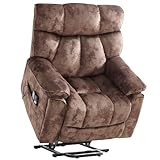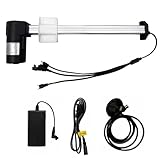Recliners are cozy for people—and irresistible hideouts for cats. The warm nooks, rocking motion, and secret spaces under the seat make them perfect feline territory. Unfortunately, the same features that make recliners comfortable for us—linkages, scissor arms, and moving footrests—create real hazards for curious paws, tails, and whiskers. Power models add quiet, steady motion that can catch a sleeping cat off guard; rocker and glider bases introduce floor-level pinch zones; and dangling cords or warm power bricks invite chewing and tangles. The good news: with smart setup, a few inexpensive add-ons, and consistent “recliner rules,” you can keep your cat safe without giving up the chair you love.
In this guide, you’ll learn which mechanisms pose the biggest risks, how to block access to danger zones, the house rules every family member should follow, and simple training and environment tweaks that redirect your cat to safer, comfier spots. A five-minute monthly inspection and basic cord management go a long way—so you can relax, recline, and keep your favorite co-pilot safe.
Why Recliners Can Be Risky for Cats
- Pinch/Crush points: Linkages under the seat and the scissor arms behind the footrest can trap paws, tails, or whiskers when opening/closing.
- Hideaway behavior: Many cats nap inside the base, crawl onto the footrest shelf, or behind the headrest—areas that move unexpectedly.
- Silent motion: Power recliners move quietly, giving less warning for a sleeping cat.
- Rockers & gliders: Fore–aft motion can catch paws under runners or base plates.
- Electrical risks (power models): Chewing low-voltage cords, getting tangled, or sleeping on warm power supplies.
| Hazard | Where It Happens | Risk Level | Primary Fix |
|---|---|---|---|
| Pinched paw/tail | Under seat linkages, footrest scissor arms | High | Block access under chair; check-before-close rule |
| Cat inside base cavity | Behind dust cover, under seat pan | High | Attach dust barrier; use pet gates when unattended |
| Caught under rocker/glider | Front/rear base arc | Medium | Place on hard, flat surface; restrict access during use |
| Chewed cords | Power brick, handset cable, actuator leads | Medium | Cord covers, cable clips, mount power brick off floor |
Which Mechanisms Are Safest?
- Wall-hugger / zero-wall recliners: The chair slides forward as the back reclines; fewer “open” cavities behind the backrest. Still block the underside.
- Lift chairs: Slow, controlled movement and higher starting posture reduce surprise, but linkages still pinch—enforce check-before-move.
- Manual lever vs push-back: Push-back models snap closed if you shift weight rapidly. Lever-style gives more deliberate control.
- Swivel/rocker/glider: Most risky for lurking paws because motion occurs at floor level. Use on smooth, hard floors and supervise.

Sweetcrispy Massage Recliner Chair for Adults, Adjustable Home Theater Seating with Lumbar Support, Small Recliners for Small Spaces, Dark Grey

BOSMILLER Oversized Recliner Chair for Adults with Vibration Massage and Lumbar Heating Swivel Rocker Recliner with Cup Holder and USB Charge Port for Living Room

CANMOV Power Lift Recliner Chair for Elderly with Vibration Massage and Lumbar Heating, Overstuffed Electric Lift Chair with Side Pocket and 2 Cup Holders for Living Room, Brown
Cat Hazard Zones on a Recliner
- Undercarriage: Open metal linkages and scissor arms—install a dust barrier and physical block.
- Footrest cradle: The shelf behind the footrest is a favorite perch; teach “no ride-along” and always look underneath before closing.
- Rear back gap: Some chairs expose fabric/foam gaps near the floor—cats crawl in here. Close with upholstery mesh.
- Floor arc (rockers/gliders): Keep tails clear; place a low-profile mat that visually marks the swing area.
- Cables & power brick: Mount under an end table or on the chair frame with Velcro/straps; route cables through split loom.
Prevention Checklist (Setup & Rules)
Physical barriers
- Install a full dust cover under the seat (tight, stapled or Velcro) so a cat cannot enter the base. Try upholstery dust cover mesh.
- Place under-chair blocks (foam rollers, furniture risers, or a simple wooden frame) to reduce crawl space without interfering with motion — see furniture risers or foam rollers.
- Use split-loom cord covers and adhesive cable clips; mount the power supply off the floor with Velcro straps or a small mounting bracket.
- During non-use, keep the chair in the closed & upright position.
House rules for every user
- Check → Call → Close: Look under and behind, call the cat’s name, then close slowly while watching the floor and footrest gap.
- Keep a foot on the floor as you begin to close a manual recliner; stop immediately if you feel resistance.
- No pushing the backrest to “snap shut.” Use the handle or button only.
- Power models: use the momentary button (finger stays on control) rather than a toggle you can’t stop quickly.
Environmental tweaks
- Provide a better den next to the chair: a covered cat bed or cube with a heating pad (low/thermostat pad). See covered cat beds and low-watt heated cat beds.
- Place a scratch post or cardboard scratcher by the arm to protect upholstery.
- Use a motion-activated pet deterrent (air puff or gentle ultrasonic) under the chair if your cat persists in exploring the base.
- Mark the rocker/glider swing with a low-profile floor mat for visual boundary.

Train & Redirect Your Cat
- Yes/No zones: Mark the under-chair perimeter with a thin mat or tape line; reward when the cat sits outside the line.
- Target training: Teach your cat to go to mat/bed on cue using treats. Cue before you operate the recliner.
- Timing matters: Cats are most explorative at dawn/dusk—avoid operating the chair unsupervised then.
- Enrichment: Give vertical options (cat tree) and window perches so the footrest shelf isn’t the “best seat.”
Monthly Safety Inspection Routine
- Flip or tilt the recliner (unplug first). Confirm the dust cover is intact; repair tears with upholstery mesh or gaffer’s tape as a stopgap — upholstery mesh, gaffer’s tape.
- Cycle slowly while watching linkages; verify nothing rubs the floor blocks or cord covers.
- Fasteners: Tighten any loose bolts; loose motion creates larger pinch gaps. Consider a compact socket wrench set.
- Cable management: Zip-ties snug but not choking; verify handset cord cannot dangle to the floor where cats play — heavy-duty zip ties.
Household Rules for Kids & Guests
- No playtime on the recliner; no rocking games.
- Always ask an adult before moving the chair if pets are present.
- Keep toys/laser pointers away from the base—never lure a cat under the chair.
If an Accident Happens
- Stop movement immediately. For power models, release the button; if jammed, unplug the power brick.
- Lift weight off the cat by reversing the motion or manually lifting the footrest (two people if needed). Do not yank the cat free if trapped.
- Wrap in a towel to prevent scratching; call your veterinarian or an emergency clinic. Even minor crush injuries can swell and worsen.
- Document the mechanism area to fix the hazard before next use.
FAQs
Are recliners inherently unsafe for homes with cats?
Not if you use barriers, follow check-before-close rules, and supervise during movement. The risk drops dramatically with a closed base and good habits.
Which recliner style should I buy if I have cats?
Look for wall-hugger models with minimal exposed gaps, a tight dust cover, and slower power motion. Avoid open-bottom rocker/gliders if your cat hides under furniture.
Will a power recliner cut power if something is trapped?
Most do not have automatic pinch detection. You must supervise and be able to stop movement instantly.
Can I use scat mats or citrus sprays?
Use with care. Motion-activated air puffs under the chair are gentler and effective; avoid harsh scents on leather or fabrics.
My cat loves the footrest shelf. Any safe compromise?
Offer a reserved perch (cat bed) beside you and cue “go to bed” before moving the chair. Never close while a cat is on/behind the footrest.
Bottom Line
Recliners can injure cats—but they don’t have to. Close the base with a dust barrier, block crawl access, manage cords, and make “check → call → close” your family rule. Choose slower wall-hugger or lift mechanisms when shopping, keep a comfy alternative perch nearby, and run a quick monthly safety check. With thoughtful setup and clear household habits, you can enjoy your recliner while keeping your cat safe and stress-free.

ttmagic Metal Recliner Handle Replacement Parts with Cable, Universal Recliner Sofa Chair Couch Release Lever Pull Handle, Fits Ashley and Major Recliner Brands, Exposed Cable Length 4.9“

ttmagic Sofa Chair Recliner Release Pull Handle 3" by 3.5" Replacement Parts with Cable, Fits Ashley Lazy Boy and Most Recliner Brands Couch Sofa Chair Furniture, Exposed Cable Length 4.9"

Dlfeue Mulin Motor Model ML8-252 Linear Actuator kit for Power Recliner Electric Sofa Lift Chair Massage Seat

ttmagic Universal Heavy-Duty Metal Sofa Chair Recliner Release Pull Handle Replacement Parts, Fits Ashley, Lazy Boy and Most Recliner Brands, 3.5"L x 3"W x 1.2"H Handle Size

Recliner Replacement Parts with Pull Handle and Release Cable (2-Sets), Repair Recliner Mechanism Parts Compatible with Most Furniture of Recliner Sofa Couch Chair





